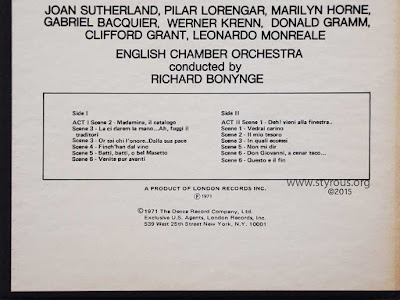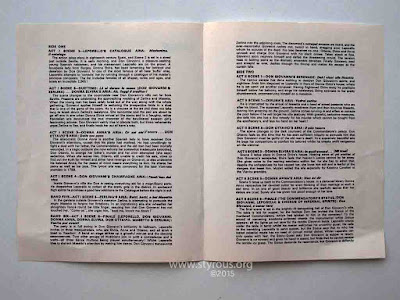This is in the Sci-Fi category but there is nothing fiction about it. "In Advance of the Landing"
is a photographic documentation of real-life people doing real things
in the real world. It is a fascinating look into the lives and stories of the people
who sincerely believe in the existence of extra-terrestrial life and have interpreted that life through drawings, models, tableaus and life-styles.
The book, written by Douglas Curran
with photographs by him as well, examines the lives of everyday people who
have dreamed and constructed their interpretation of what an extra-terrestrial
might look like, the vehicles they might ride in, the clothes they
might wear and the life-style they may lead. He spent 8 years traveling across North America in preparation for the book. The documentation is done
with sincerity and no critique nor judgement of these people. The photographs, drawings, etc. are excellent.


recto title page
In Advance of the Landing
photos by Douglas Curran
photo of book by Styrous®
Photo below is the Diorama at the Roswell UFO Enigma Museum
depicting the crashed flying saucer and dead aliens from the 1947 Roswell UFO incident, near Roswell, New Mexico.

In Advance of the Landing
detail from back cover
photos by Douglas Curran
detail photo of book by Styrous®
detail from back cover
photos by Douglas Curran
detail photo of book by Styrous®
From Wikipedia:
"Alien life, such as microorganisms, has been hypothesized to exist in the Solar System and throughout the universe. This hypothesis relies on the vast size and consistent physical laws of the observable universe. According to this argument, made by scientists such as Carl Sagan and Stephen Hawking, it would be improbable for life not to exist somewhere other than Earth. This argument is embodied in the Copernican principle, which states that Earth does not occupy a unique position in the Universe, and the mediocrity principle, which states that there is nothing special about life on Earth. The chemistry of life may have begun shortly after the Big Bang, 13.8 billion years ago, during a habitable epoch when the universe was only 10–17 million years old. Life may have emerged independently at many places throughout the universe. Alternatively, life may have formed less frequently, then spread—by meteoroids, for example—between habitable planets in a process called panspermia. In any case, complex organic molecules may have formed in the protoplanetary disk of dust grains surrounding the Sun before the formation of Earth. According to these studies, this process may occur outside Earth on several planets and moons of the Solar System and on planets of other stars."
One of the many groups featured in the book is the Bond Family with their costumes; they belong to the Unarius Conclave of Light in San Diego, California.
The Bond Family
Unarius Conclave of Light
San Diego, California
In Advance of the Landing
photos by Douglas Curran
photo of book by Styrous®
Unarius Conclave of Light
San Diego, California
In Advance of the Landing
photos by Douglas Curran
photo of book by Styrous®
The Unarius Conclave of Light has the model of the flying saucer used in the film, “The Arrival”, which was positively received by critics; review aggregate Rotten Tomatoes
reports that 63% of critics have given the film a positive review based
on 32 reviews, with an average score of 6.3/10, and its consensus
states that "The Arrival is stylish and inventive and offers a surprisingly smart spin on the alien invasion genre..." It starred Charlie Sheen, Ron Silver. and was directed by David Twohy.
Spaceship used in “The Arrival” movie
The science of extraterrestrial life is known as exobiology. The science of astrobiology
also considers life on Earth as well, and in the broader astronomical
context. Meteorites that have fallen to Earth have sometimes been
examined for signs of microscopic extraterrestrial life. In 2015,
"remains of biotic life" were found in 4.1 billion-year-old rocks in Western Australia, when the young Earth
was about 400 million years old. According to one of the researchers,
"If life arose relatively quickly on Earth ... then it could be common
in the universe."
Carl Gendreau
San Bernardino, California
In Advance of the Landing
photos by Douglas Curran
photo of book by Styrous®
San Bernardino, California
In Advance of the Landing
photos by Douglas Curran
photo of book by Styrous®
From Wikipedia:
"It is often hypothesized that life forms elsewhere in the universe would, like life on Earth, be based on carbon chemistry and rely on liquid water. Life forms based on ammonia (rather than water) have been suggested, though this solvent appears less suitable than water. It is also conceivable that there are forms of life whose solvent is a liquid hydrocarbon, such as methane, ethane or propane."
"The panspermia hypothesis proposes that life elsewhere in the Solar System may have a common origin. If extraterrestrial life was found on another body in the Solar System, it could have originated from Earth just as life on Earth may have been seeded from elsewhere (exogenesis). The first known mention of the term 'panspermia' was in the writings of the 5th century BC Greek philosopher Anaxagoras."

The Blue Bird, De Tour Village, Michigan
In Advance of the Landing
photos by Douglas Curran
photo of book by Styrous®
In Advance of the Landing
photos by Douglas Curran
photo of book by Styrous®
Since the 1950s, scientists have argued the idea that "habitable zones"
around stars are the most likely places to find life. Numerous
discoveries in these zones since 2007 have generated estimations of
frequencies of Earth-like planets —in terms of composition— numbering in
the many billions though as of 2013, only a small number of planets have been discovered in these zones. Nonetheless, on November 4, 2013, astronomers reported, based on Kepler space mission data, that there could be as many as 40 billion Earth-sized planets orbiting in the habitable zones of Sun-like stars and red dwarfs in the Milky Way, 11 billion of which may be orbiting Sun-like stars. The nearest such planet may be 12 light-years away, according to the scientists. Astrobiologists have also considered a "follow the energy" view of potential habitats.
For more than 20 years,
Vancouver-based photographer Douglas Curran has documented various
beliefs and cultures, from tent preachers to a secret spirit mask
society in Central Africa. When not pursuing his own projects, Curran is
a still photographer for the motion picture industry. More about Curran
and his work can be found on his website.
By Douglas Curran
Foreword by Tom Wolfe
62 illustrations, 28 in full color
144 pages • 10 x 9" • Cloth
ISBN 0-7892-0708-7 • $35.00
It's a remarkable view of life on the edge!































